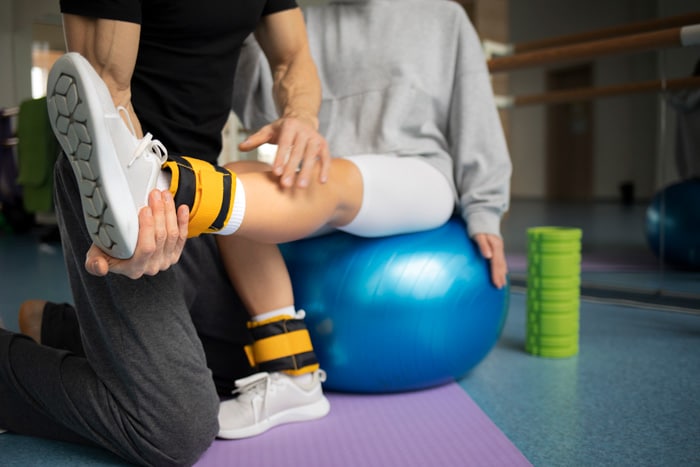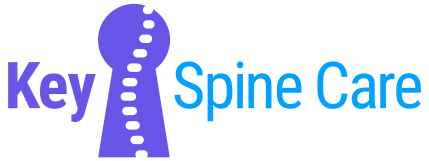Treatment Based Classification
The Treatment-Based Classification system (TBC) is used to assess patients and develop treatment plans to help them reach their goals.

By Dr. Alexander Elahi
What should I know about the Treatment-Based Classification system?
First, rest assured that the Treatment-Based Classification system (TBC) is not new — in fact, it has been used since 1995. Second, TBC is backed by peer-reviewed research. And third, the TBC considers the patient’s unique functional capacity and disability rating to meet them where they’re at in a dynamic system that can progress at whatever rate is correct for the patient!
What is the TBC Approach?
The Treatment-Based Classification system (TBC) triages patients so that they get seen by the appropriate provider and are neither over nor under-treated. The first triage level determines whether the patient is appropriate for rehabilitation by ruling out serious pathologies and/or serious comorbidities. The second level then determines what is the best rehabilitation approach based on the patient’s clinical symptoms.
What are the different rehabilitation approaches used in TBC?
When using the Treatment-Based Classification system (TBC), after the first triage level has determined that the patient’s condition is appropriate for rehabilitation, then the next step is to choose which of three rehabilitation approaches is correct for the patient. The three approaches are symptom modulation, movement control, and functional optimization.
Symptom modulation is the best approach for patients experiencing high disability, volatile symptoms, and high to moderate pain. Common treatments used in this approach include directional preference exercises (e.g. McKenzie Method), manipulation/mobilization, traction, and (rarely) active rest.
Movement control is the best approach for patients experiencing moderate disability, stable symptoms, and moderate to low pain. Common treatments used in this approach include sensorimotor exercises, stabilization exercises, and flexibility exercises. Dynamic Neuromuscular Stabilization treatments are often very effective in this approach.
Functional optimization is the best approach for patients experiencing low disability, controlled symptoms, and low to absent pain. Common treatments used in this approach include strength and conditioning exercises, work- and/or sport-specific tasks, aerobic exercises, and general fitness exercises. Often in this approach, we apply concepts from the Pain-Free Performance Specialist approach of Dr. John Rusin.
It is important to realize that one of these three approaches is not inherently superior to another but rather what is important is meeting the patient where they currently are in their rehabilitation journey with the appropriate management strategies.
How does Key Spine Care use the TBC?
At Key Spine Care (KSC), the Treatment-Based Classification system (TBC) allows us to meet the patient where they currently are in their rehabilitation journey with appropriate management strategies. We specialize in helping active adults suffering from neck and back pain resume doing what they love without the use of pills, injections, or surgery – even when they’ve been told that’s what they need!
At KSC no two patients will have the same rehab program – and why should they as no two patients are identical?! Depending upon which approach is appropriate for a given patient, their treatment session might include chiropractic adjustments, mobilizations, dry needling, instrument-assisted soft tissue mobilization, etc. – and those are just the passive techniques we use! For active treatments, a patient might perform end-range loading movements, core stabilization training, Dynamic Neuromuscular Stabilization training, variations of the six foundational human movements (e.g. push, pull, squat, hinge, lunge, carry), etc.! The point is that at KSC we have a large toolbox from which to draw from to provide our patients with the best treatment possible to help them reach their goals quickly – after all, if all we had in our toolbox was a hammer then every problem would look like a nail!
To achieve this goal, Dr. Elahi has continually pursued continuing education and is currently the only board Certified Chiropractic Sports Physician®, the only provider Certified in Mechanical Diagnosis & Therapy® (aka McKenzie Method), and the only Certified Primary Spine Practitioner in Frederick City and County! In fact, Dr. Elahi is one of only thirteen providers Certified in Mechanical Diagnosis & Therapy® in Maryland (and only the second chiropractor) and further is one of only four Certified Primary Spine Practitioners in Maryland (and one of only approximately 300 worldwide).
Do this next!
- Share this article with a friend or family member who has been dealing with constant back, neck, shoulder, hip, or knee pain that TBC could help!
- Call our office TODAY at 240-226-1440 to book your TBC Assessment today.
- Keep an eye out for our next article!
